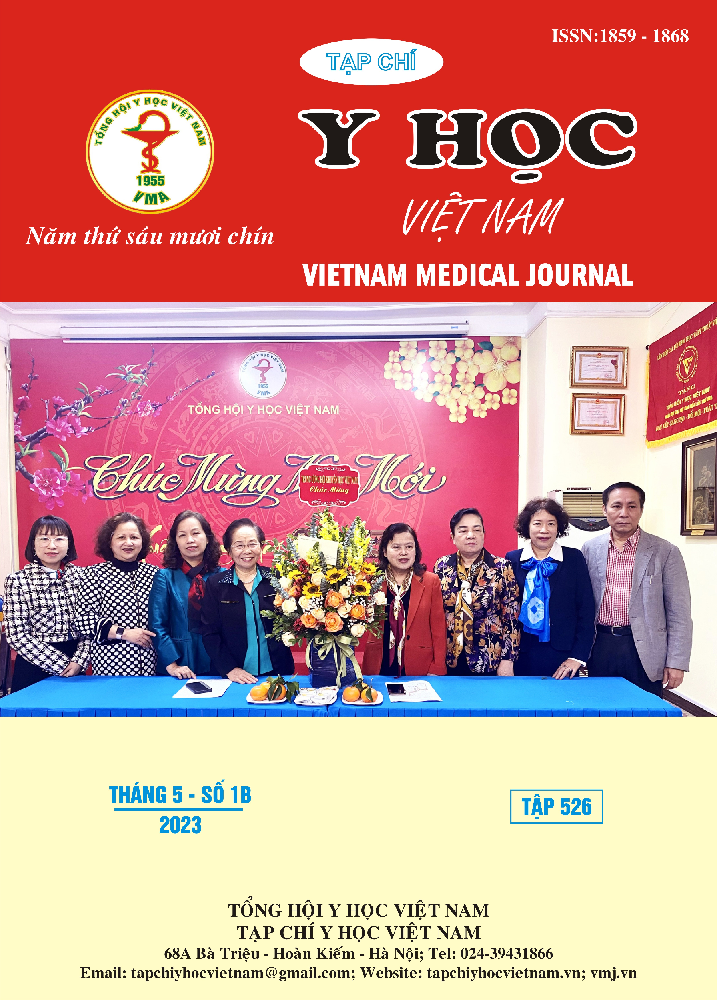SURVEY ON USE OF AMIKACIN IN GIA DINH PEOPLE HOSPITAL
Main Article Content
Abstract
Background: Amikacin is an aminoglycoside antibiotic used in severe Gram-negative infections. Objective: This study was thus conducted to survey on the use of amikacin and assess the suitability, nephrotoxicity characteristics. Study population and methods: A descriptive cross – sectional study was conducted on 288 patient medical records over 18 years old who used amikacin at least 3 days and indicated amikacin from June 1st 2020 to December 30th 2020 at Gia Dinh People Hospital. Patient medical records were collected for data analysis including characteristics of the study population, microbiologic characteristic, antibiotic use, rationality, nephrotoxicity, potential risk factors for amikacin-induced nephrotoxicity. Results: The mean age was 63.39 ± 16.39 years old, 56.25% of the population was female. The median weight of the study population was 52 kg, median BMI was 21.05 kg/m2, the proportion of patients with impaired renal function was 40.62%. Urinary tract infections accounted for the majority with the rate of 30.72%, the frequency of encountering Gram-negative bacteria accounted for the majority of 82.63%, E.coli were the most common isolated organism (33.96%), K. pneumoniae accounts for 23.58%, A. baumannii 9.43% and P. aeruginosa 7.55%. Amikacin was indicated in the alternative treatment regimen with the rate of 62.80%, 98.30% used in the combination regimen, in which amikacin combined with carbapenem accounted for 48.63%. Mainly amikacin used ODD dose regimen, with a dose of 750 mg/day observed 57.29%, the average dose was 13.20 ± 3.89 (mg/kg/day). Nephrotoxicity was observed in 12.84%. Conclusion: Amikacin is used mainly when treatment fails at first. Therefore, it is necessary to strengthen surveillance for drug resistance and determine the MIC value of amikacin as well as monitor the patient's renal function while taking the drug.
Article Details
Keywords
Amikacin, gram negative, nephrotoxicity
References
2. Ngô Nguyên Nhật Anh, et al (2021), “Khảo sát việc sử dụng kháng sinh amikacin tại khoa hồi sức tích cực, bệnh viện Đại học Y Dược Thành Phố Hồ Chí Minh, Tạp chí Y Học TP. Hồ Chí Minh, 25(4) trang 139-145.
3. Nguyễn Sử Minh Tuyết, et al., (2009), “Khảo sát vi khuẩn gây nhiễm khuẩn bệnh viện tại bệnh viện Nhân dân Gia Định”, Tạp chí Y Học TP. Hồ Chí Minh, 13(6), trang 295-300.
4. David L. Paterson; Jennifer M. B. Robson; Marilyn M. Wagener (1998). Risk factors for toxicity in elderly patients given aminoglycosides once daily, 13(11), pp. 735–739.
5. Laurence L. Brunton, Randa Hilal-Dandan, Bjorn C. Knollmann., “Aminoglycoside, in Goodman and Gilman's - The pharmacological baisis of therapeutics”, Mc Graw Hill Educaion, California, pp. 2900-2926.
6. Lopes J. A., Jorge S. (2013), " The RIFLE and AKIN classifications for acute kidney injury: a critical and comprehensive review & quot; Clinical Kidney Journal, 6(1), pp. 8-14.
7. Roger, C., Louart, B., Elotmani, L. et al. An international survey on aminoglycoside practices in critically ill patients: the AMINO III study. Ann. Intensive Care 11, 49 (2021).
8. Sawyers, C. L.; Moore, R. D.; Lerner, S. A.; Smith, C. R. (1986). “A Model for Predicting Nephrotoxicity in Patients Treated with Aminoglycosides”, Journal of Infectious Diseases, 153(6), pp. 1062-1068.


